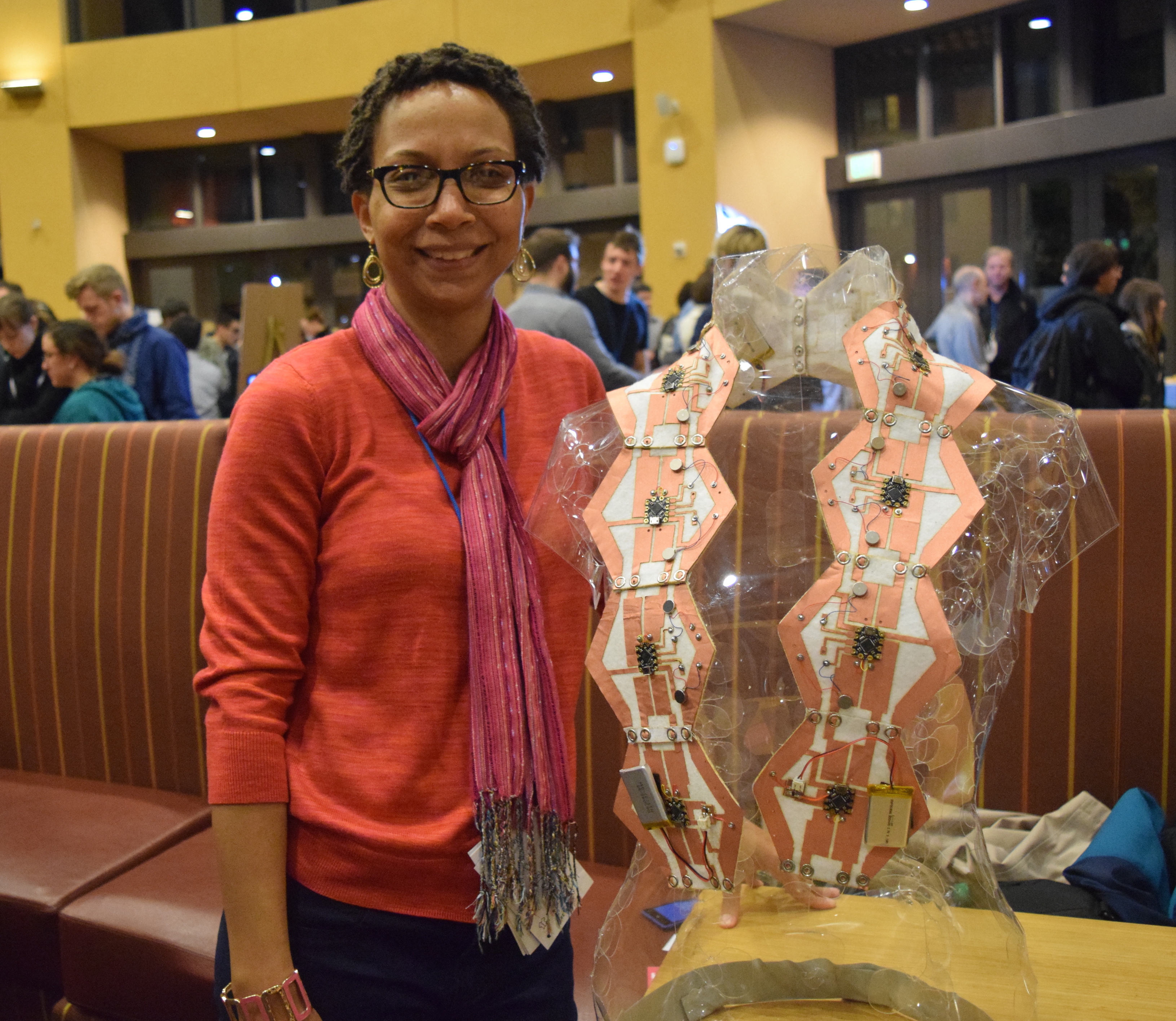 Michele Williams, human-centered computing PhD candidate, unveiled the Smart Scarf, at at the Conference on Tangible, Embedded, and Embodied Interaction at Stanford University and MIT’s Technology Review picked up
Michele Williams, human-centered computing PhD candidate, unveiled the Smart Scarf, at at the Conference on Tangible, Embedded, and Embodied Interaction at Stanford University and MIT’s Technology Review picked up
on it. Williams had the opportunity to work on the scarf as part of her internship with Microsoft Research.
The current prototype—which the researchers made after consulting with people with autism and hearing and visual disabilities—is a flexible laser-cut garment made of hexagons of industrial felt overlaid with conductive copper taffeta. Some of the modules can heat up, while others can vibrate.
All the modules are controlled by one master module that is also responsible for communicating with the smartphone app over Bluetooth. The modules link together with metal snaps and are interchangeable; if you want a heat-producing module closer to your stomach and a vibrating one on your neck, you can unsnap the chain and reconfigure it, says Asta Roseway, a principal research designer at Microsoft Research and a paper coauthor.
Tags: COEIT
